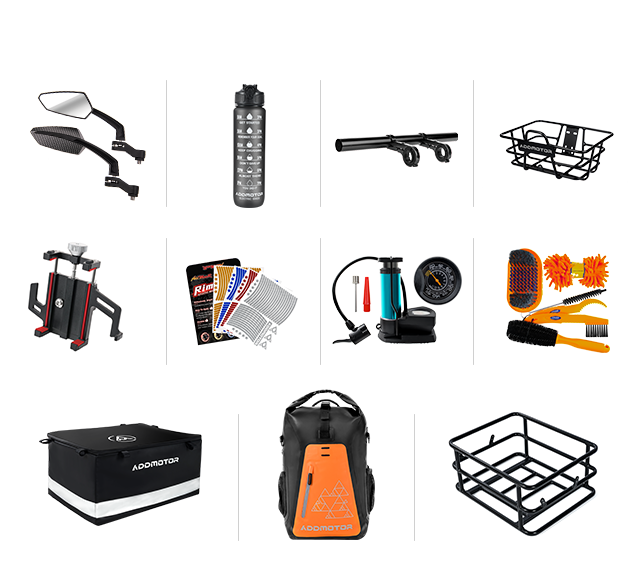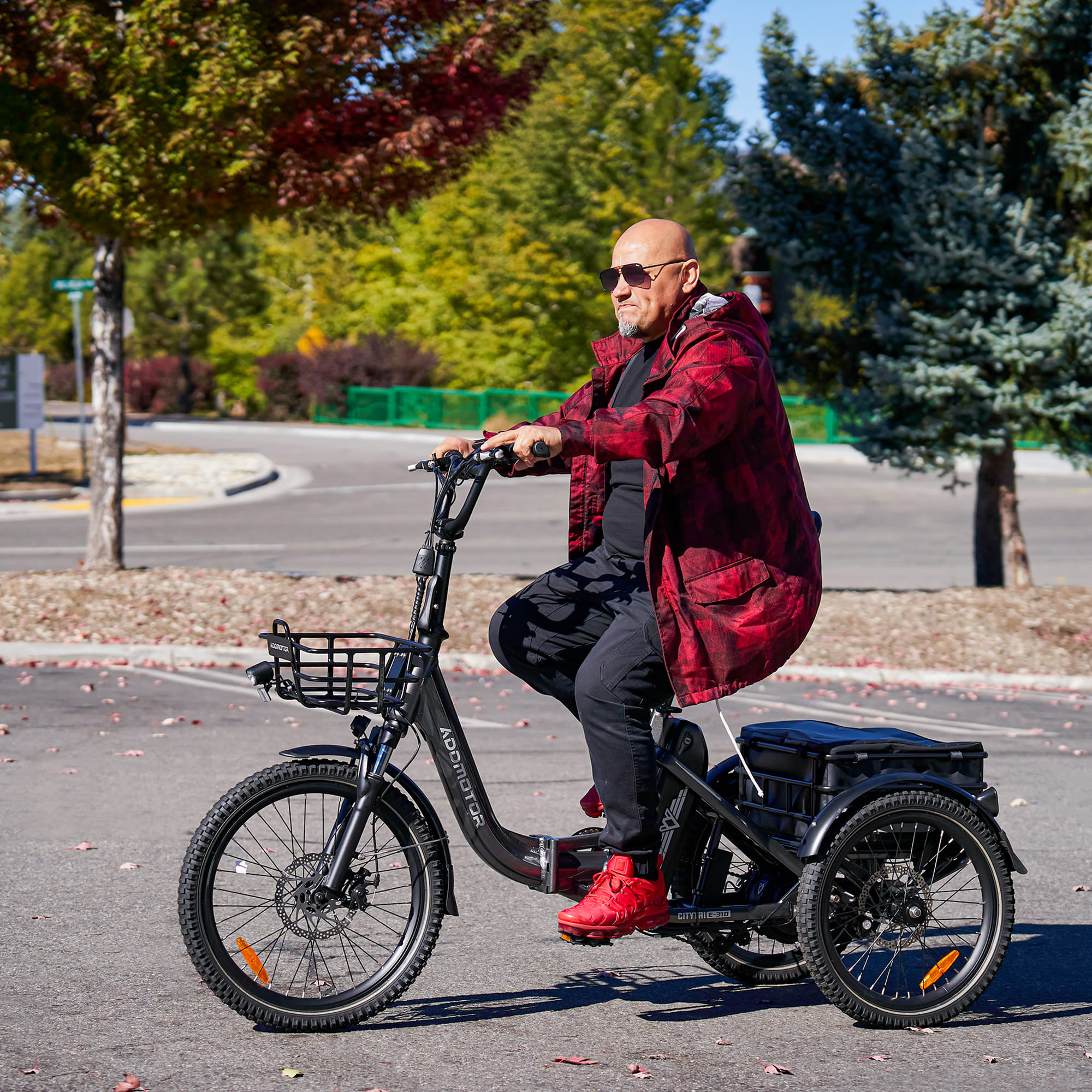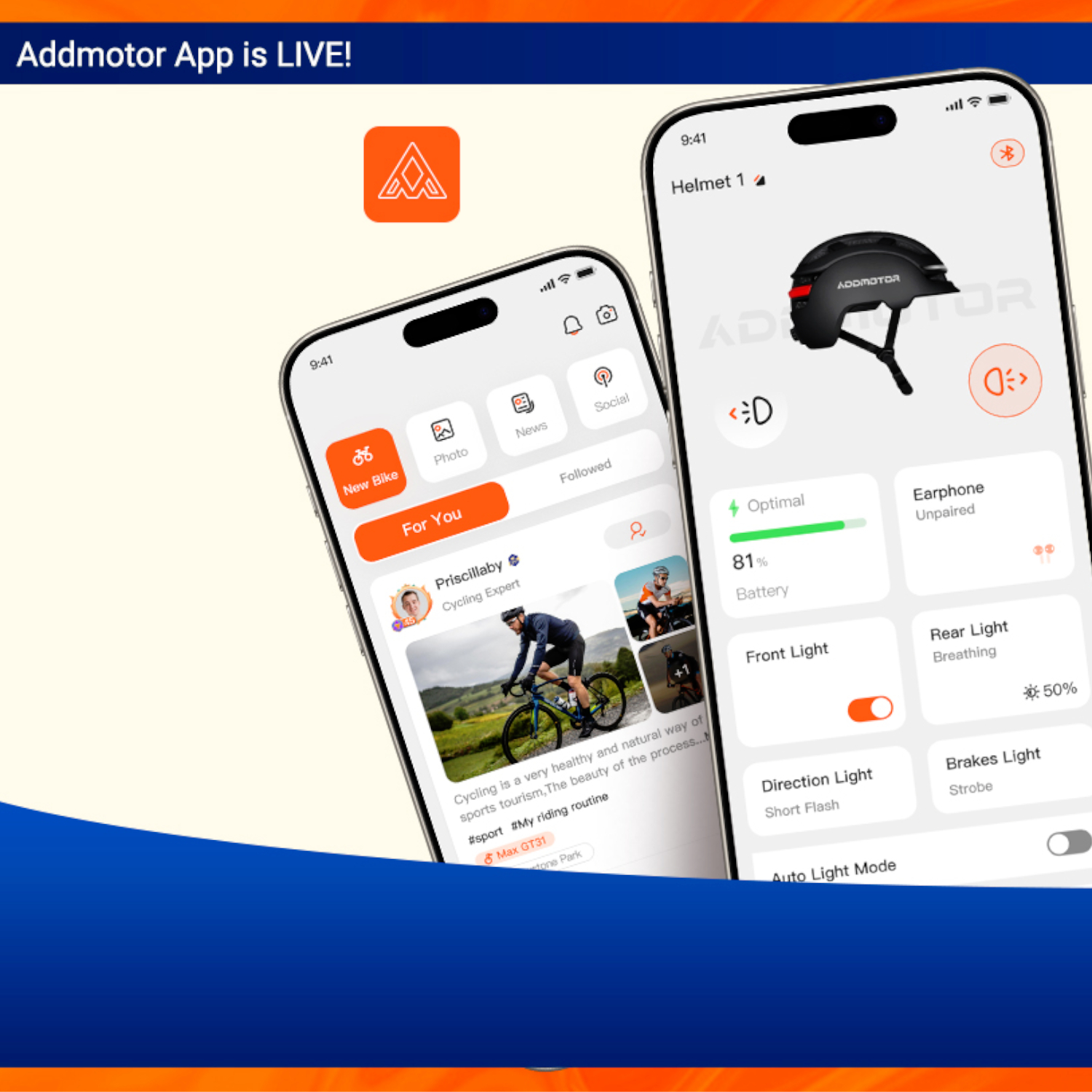Essential Maintenance Guide for Your E-Trike
By ADDMOTOR | 29 August 2025 | 0 Comments

Electric tricycles (e-trikes) are reshaping the landscape of personal mobility. With their enhanced stability, eco-conscious design, and user-friendly operation, e-trikes have become a popular choice for commuters, urban explorers, and leisure riders alike. Whether you're navigating city streets, running daily errands, or enjoying a weekend ride, an e-trike offers a reliable and efficient way to get around.
However, like any vehicle, consistent maintenance is key to ensuring optimal performance and safety. Neglecting routine care can lead to reduced battery life, mechanical issues, and costly repairs—all of which can be avoided with a proactive approach.
This comprehensive guide is designed to help you keep your e-trike in peak condition. From basic upkeep and battery care to troubleshooting common problems, you'll find practical tips and expert advice to extend the life of your e-trike and enhance your riding experience. Whether you're a first-time owner or a seasoned rider, this article will equip you with the knowledge to maintain your e-trike with confidence.
Understanding Your E-Trike: Key Components
Before diving into maintenance routines, it's important to understand the essential components that make your electric tricycle function. Familiarity with these parts not only helps you identify potential issues early but also empowers you to maintain performance and safety more effectively.* Motor
The motor is the driving force behind your e-trike. Typically located in the hub of the wheel or mounted mid-drive near the pedals, it converts electrical energy into motion. As one of the most complex and sensitive components, the motor requires careful handling and regular inspection to ensure optimal performance.
* Battery
Serving as the power source for the motor, most e-trikes rely on lithium-ion batteries due to their lightweight design and high energy efficiency. However, these batteries are sensitive to charging habits and environmental conditions. Proper care is essential to preserve battery life and maintain consistent range.
* Controller
Often referred to as the "brain" of the e-trike, the controller manages the flow of electricity between the battery and motor. It interprets input from the throttle or pedal assist system and adjusts power output accordingly. A malfunctioning controller can lead to erratic performance or complete power loss.
* Brakes
E-trikes are equipped with either mechanical (cable-based) or hydraulic (fluid-based) braking systems. Both types require regular inspection and adjustment to ensure reliable stopping power. Brake performance is critical for rider safety, especially when navigating busy streets or downhill terrain.
* Tires
Tires play a vital role in traction, ride comfort, and energy efficiency. E-trike tires are generally wider than those on standard bicycles, offering improved stability and grip. Maintaining proper tire pressure and checking for wear can prevent accidents and enhance battery performance.
* Frame and Suspension
The frame provides structural support, while the suspension system absorbs shocks from uneven surfaces. Loose bolts, cracks, or worn suspension components can compromise comfort and safety. Periodic checks help prevent long-term damage and ensure a smooth ride.
Understanding how each of these components contributes to your e-trike’s functionality is the first step toward effective maintenance. With this foundation, you'll be better equipped to keep your e-trike running smoothly and safely.
Routine Maintenance Checklist
E-Trike Maintenance ChecklistDaily/Weekly:
* Check tire pressure to maintain efficiency and prevent premature wear
* Test brakes to ensure smooth and reliable response
* Keep battery charge between 20% and 80% to extend lifespan
* Confirm lights and horn are working, especially for traffic or low-light conditions
Monthly:
* Lubricate chain with bike-specific product to prevent rust and ensure smooth pedaling
* Inspect bolts, frame, handlebars, and wheels for tightness
* Examine brake pads for wear or squeaking; replace if needed
* Clean frame, motor casing, and battery terminals to prevent dirt buildup
Seasonal/Biannual:
* Calibrate battery by fully discharging and recharging to maintain accurate readings
* Check suspension system for leaks or reduced shock absorption
* Review smart controller for available software updates
Battery Care: Maximize Lifespan and Safety
The battery is the heart of your e-trike—and often the most expensive component. Its performance directly affects range, reliability, and overall ride quality. Proper care not only extends its lifespan but also helps you avoid costly replacements and potential safety hazards.When it comes to charging, lithium-ion batteries perform best under partial cycles. Instead of allowing the battery to fully discharge, aim to keep the charge level between 20% and 80%. This range helps preserve cell integrity and slows long-term degradation. Always use the original charger provided by the manufacturer, as third-party alternatives may not be properly calibrated and can lead to overheating or damage. Charging should be done in a cool, dry environment, away from direct sunlight or heat sources. It’s also wise to avoid plugging in immediately after a long ride, as residual heat from use can shorten battery life.
If you plan to store your e-trike for an extended period, the battery should be kept at around 50% charge. This helps maintain its health during inactivity. Extreme temperatures—both hot and cold—can negatively affect battery performance. Cold conditions may reduce capacity temporarily, while excessive heat can permanently degrade the cells.
Safety should always be a priority. Regularly inspect the battery for any signs of swelling, leakage, or unusual odors. These are indicators of internal failure and require immediate attention—stop using the battery and consult a professional. Additionally, avoid leaving your battery plugged in overnight. Overcharging not only shortens its lifespan but also increases the risk of fire.
By following these guidelines, you’ll ensure your battery remains efficient, safe, and reliable throughout the life of your e-trike.
Even with regular maintenance, occasional issues can still arise. Understanding how to identify and resolve common problems can save time and frustration. One frequent concern is the motor failing to engage. If your e-trike suddenly loses power or won’t start, begin by checking the battery connection—loose wires or dirty terminals can interrupt the flow of electricity. If everything looks secure, inspect the throttle and controller, as wiring faults or software glitches may also be the cause.
Unusual noises during a ride can signal mechanical issues. Rattling often points to loose bolts or chain tension problems, while grinding may indicate worn bearings or brake pads. These sounds shouldn’t be ignored, as they can lead to more serious damage if left unresolved.
Brake performance is essential for safety. If you experience brake drag—where the brakes resist movement even when not engaged—it may be necessary to adjust the calipers or check cable tension. A spongy feel in hydraulic brakes could mean air in the system, requiring bleeding, while mechanical brakes may simply need cable tightening.
Rapid battery drain is another common issue, especially in older e-trikes. Accessories like lights or GPS units can slowly deplete the battery, even when the motor isn’t running. Over time, lithium-ion batteries also lose capacity. If your battery is more than two years old and struggles to hold a charge, replacement may be the best option.
While many of these problems can be addressed with basic tools and a bit of know-how, it’s important to recognize your limits. If you're unsure about a diagnosis or repair, seeking help from a professional technician is the safest approach. DIY fixes are useful, but safety should always come first.
Cleaning and Storage Tips
A clean e-trike is a happy e-trike. Dirt and grime can affect performance and lead to corrosion.Cleaning Routine
* Wipe down with a damp cloth to remove dirt and grime
* Avoid using high-pressure water, which can damage electrical components
* Use mild soap only; harsh chemicals may degrade paint, rubber, and seals
* Dry thoroughly, especially around the battery and motor, to prevent moisture buildup
Storage Tips
* Store indoors to protect from moisture and extreme temperatures
* Use a cover if storing outside to shield from the elements
* Elevate tires during long-term storage to prevent flat spots and preserve tire shape
Conclusion: Ride Smarter, Not Harder
Maintaining your e-trike isn’t just about extending its lifespan—it’s about ensuring every ride is safe, smooth, and enjoyable. With just a bit of regular attention, you can avoid costly repairs and keep your e-trike performing like new.Here’s a quick recap:
* Know your components and how they interact.
* Stick to a routine maintenance schedule.
* Treat your battery with care—it’s the heart of your e-trike.
* Don’t ignore small issues—they can grow fast.
* Clean and store your e-trike properly to prevent wear and tear.
Whether you're a daily commuter or a weekend explorer, this guide empowers you to take control of your e-trike’s health. Want to go even further? Create a personalized maintenance calendar or download a printable checklist to stay on track.
Leave a Reply
Your email address will not be published.Required fields are marked. *
Latest Stories




